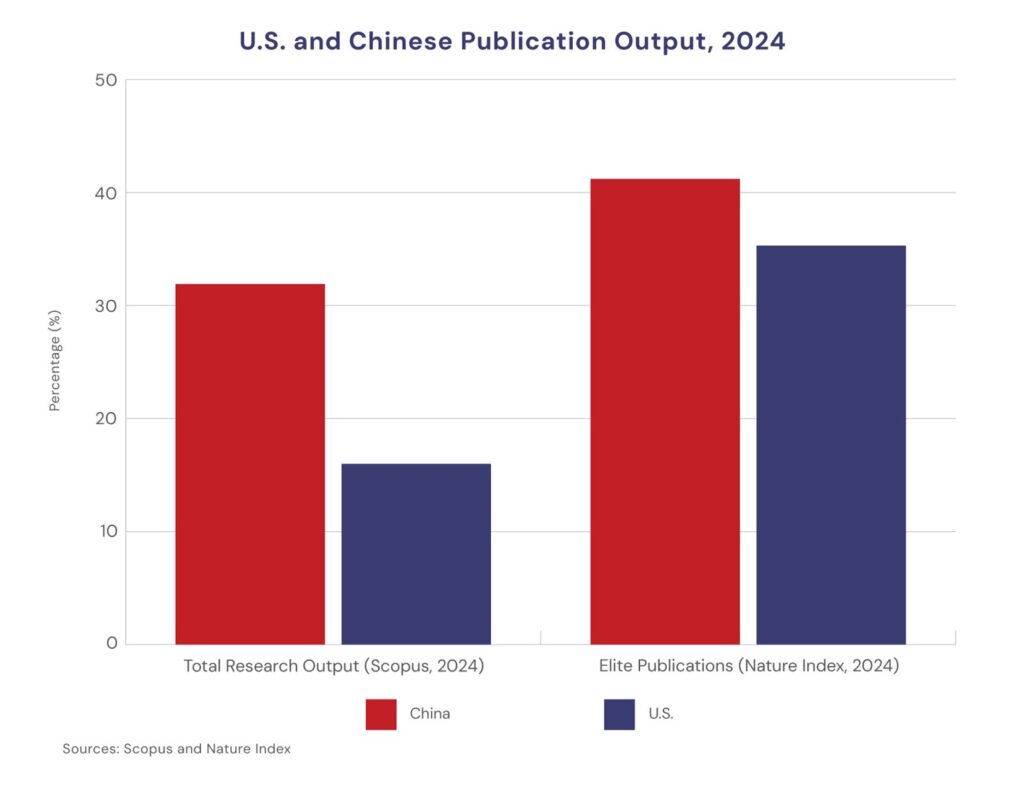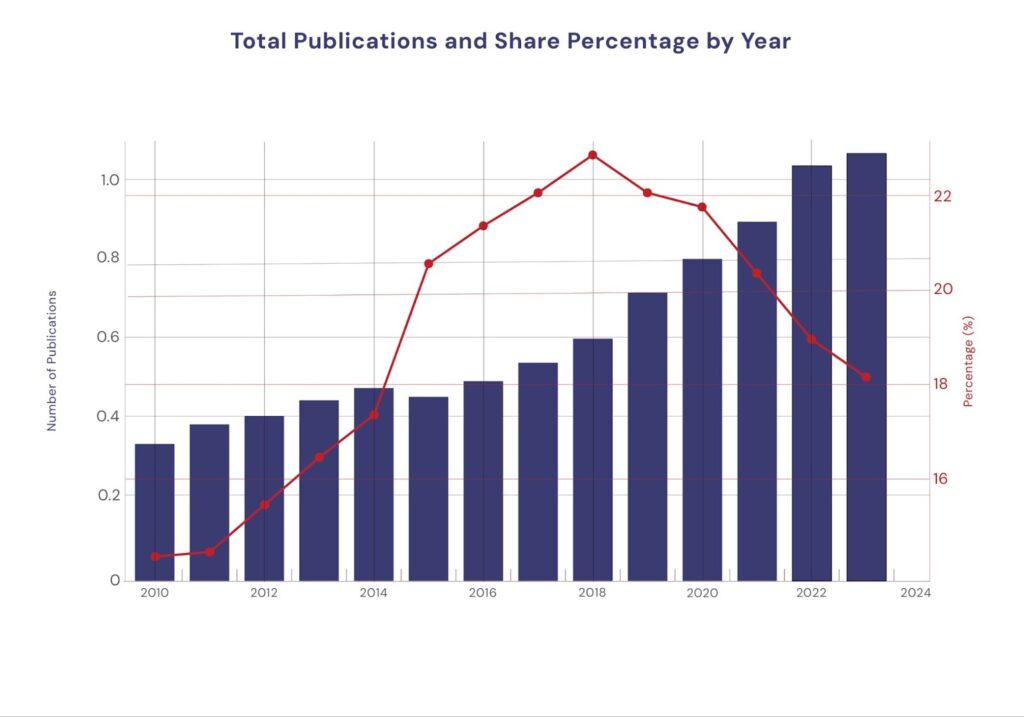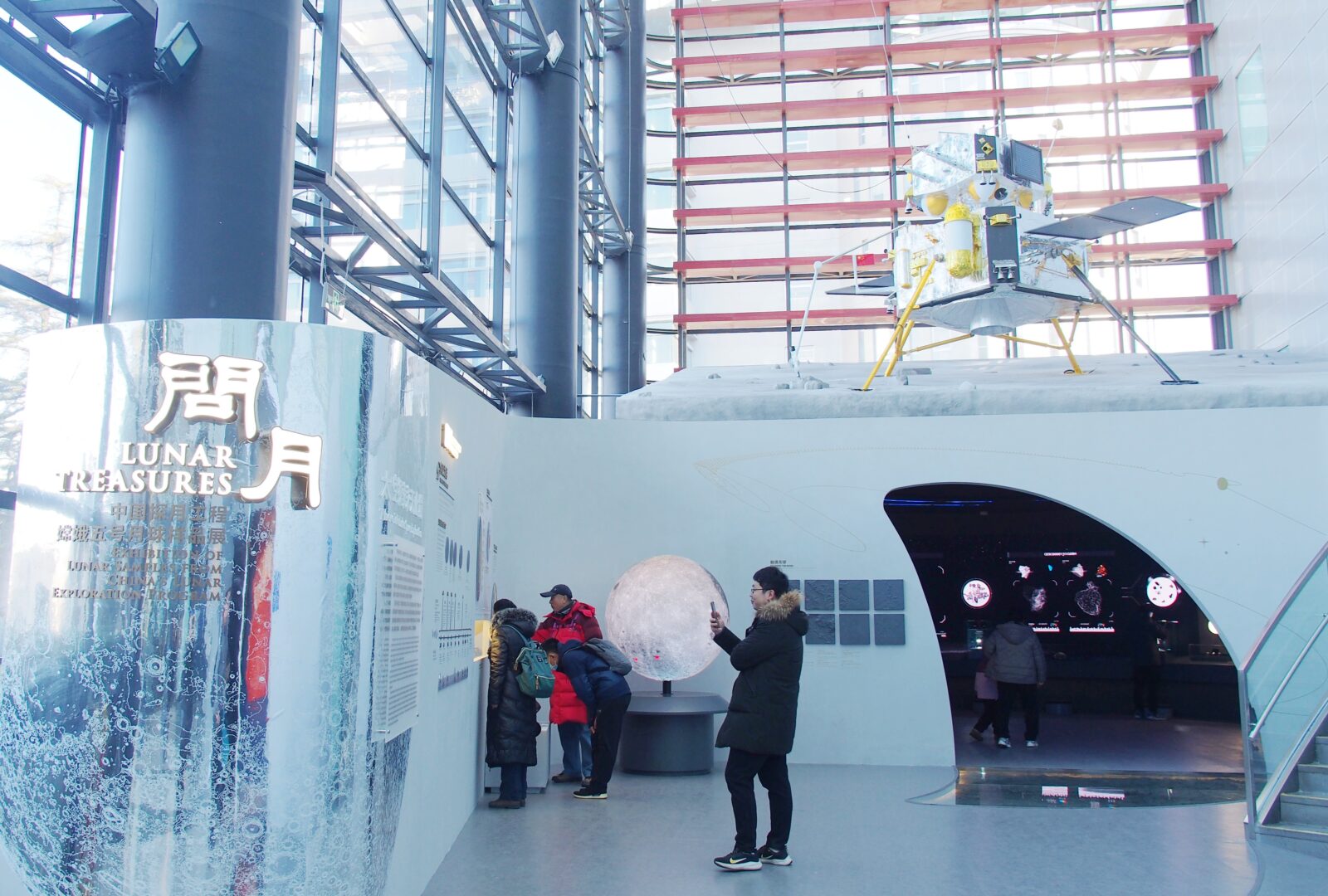China’s Historic Rise to the Top of the Scientific Ladder
Overview
For decades, Western scientists and policymakers dismissed China’s research boom as a matter of quantity over quality. Those days are over. In 2024, China achieved what seemed impossible just a few years ago, overtaking the United States in the number of publications appearing in the world’s most prestigious scientific journals. As China takes a firm place as the world leader in scientific innovation, the implications for U.S. policy are profound. The United States can no longer hope to prevent this development through an isolationist policy of cutting off scientific collaboration with China. Instead, long-term U.S. innovation potential will depend on renewing our own scientific capacities and remaining in touch with the global scientific frontier.
A further barrier falls
The Nature Index, which tracks publications in 145 of the world’s most elite natural science journals — including Nature, Science, Cell, and Physical Review Letters — shows China’s lead in 2024 with 37,273 articles compared to America’s 31,930. This represents a stunning 17 percent advantage for China in what has long been considered the gold standard of scientific excellence and follows earlier work in the Web of Science and other databases showing China overtaking the United States.
This isn’t just another data point. The Nature Index represents the final frontier — the last major metric where the United States maintained clear scientific superiority. Unlike broader publication counts that lower-tier journals can inflate, these 145 journals employ rigorous international peer review and have rejection rates often exceeding 90 percent. Getting published in Nature or Science demonstrates a genuine scientific breakthrough, not just productivity.
How did we get here?
China’s takeover happened with remarkable speed. As recently as 2020, the United States led China by 53 percent in Nature Index publications (29,172 to 19,097). But China’s growth rate of 18 percent per year vastly outpaced America’s 2.3 percent annual growth. By 2023, the gap narrowed to just 7 percent. In 2024, China pulled decisively ahead — partly due to returnees who are now publishing in China.
To understand the magnitude of this shift, I looked across multiple databases that track scholarly output: Web of Science, Scopus, OpenAlex, and Nature Index. The results appear in Figure 1 below. China now produces nearly twice as much total scientific research output as the U.S., and has a 17 percent advantage in elite publications.

A trend decades in the making
I have been tracking China’s trajectory for years. In earlier work documenting changing patterns in global research, my colleagues and I identified the shifting dynamics that would reshape the international research landscape. By 2024, when I published a comprehensive analysis of China’s position in the global system, the scale of China’s research growth was undeniable — but questions about quality persisted.
The skeptics’ quantity-not-quality argument had some merit in the early 2000s. But my research on the world’s top 1 percent of most highly cited papers showed China’s share of these elite publications growing steadily. By the time that analysis was completed, China had already achieved rough parity with the United States in this crucial quality metric — papers cited frequently enough to rank in the top 1 percent globally, indicating the frontiers of research.
The Nature Index results now confirm what the highly cited paper data suggested: China isn’t just producing more research, it’s producing quality research. These aren’t publications padding CVs in obscure journals, or from paper mills, or the results of plagiarism. These are breakthrough papers in Nature, Science, and Cell that shape entire fields.
China first overtook the United States in total publication volume around 2018 to 2020, depending on the database consulted. Analysts (including the National Science Foundation) argued this reflected quantity, not quality. They pointed to citation patterns showing 57 percent of citations to Chinese papers came from within China, compared to 37 percent for American papers — suggesting less international impact and a pattern of “citation stacking.”
But the data tells a different story. The Nature Index journals are inherently international. Global experts review papers, which must meet universal standards of novelty and rigor. China’s success here demonstrates scientific leadership, not just increased output or chummy cross-citation.
Where China dominates and where America still leads
The field-by-field breakdown reveals a hilly landscape. China is leading the United States in outputs in chemistry (2.5 times more than the United States), physical sciences (1.7 times more than the United States), and earth and environmental sciences (1.2 times more than the United States). The United States leads China in biological and health sciences outputs.
This pattern reflects strategic choices. China, by design, has invested heavily in fields seen as crucial for economic competitiveness and technological sovereignty — materials science, quantum computing, renewable energy, and advanced manufacturing. The United States maintains advantages in biomedical research, where decades of National Institutes of Health funding and pharmaceutical industry partnerships create deep institutional advantages. However, recent U.S. cuts to science funding put even this advantage into jeopardy.
The cooperation paradox
Curiously, as China’s research output has soared, its international collaboration rates have declined. In earlier work tracking global research networks, my colleagues and I documented how China’s rise initially coincided with increased international co-authorship. Chinese researchers partnered extensively with American, European, and Japanese scientists. The figure below illustrates the rapid increase in China’s output alongside the rise and fall of international cooperation.

In part due to policy, and in part due to geopolitics, Chinese research is becoming more domestically oriented. This raises critical questions: Is world science fragmenting into competing blocs? Will reduced collaboration slow scientific progress for everyone?
What this means
The implications extend far beyond academic rankings to include the very foundations of innovation and national security.
The narrative that compelled U.S. researchers to back away from cooperation with China — that America needed to protect its scientific edge — looks increasingly questionable. If China already leads or matches the United States across most metrics, restriction-based policies may accelerate rather than prevent U.S. decline.
The best researchers follow the best science. China’s rise in elite journal publications signals growing attractiveness to international talent. American universities have long benefited from being presumed leaders; however, that assumption no longer holds, and the increase in the price of an H–1B visa will further reduce the attraction of the United States.
Today’s Nature papers become tomorrow’s patents and products. China’s dominance in chemistry, physics, and materials science positions it to lead in quantum computing, advanced batteries, and next-generation semiconductors. China is already the largest filer of patents in the world.
Scientific leadership has underpinned American economic and military primacy since World War II. That era is ending, as China’s research ascendancy will translate into broader geopolitical influence.
Can America Respond?
The United States faces stark choices:
- Option one: Accept multipolarity in science as the new normal and focus on areas of continued strength — biomedical research, artificial intelligence, and fundamental theory.
- Option two: Attempt to rebuild comprehensive research leadership through dramatically increased federal research and development investment.
- Option three: Work closely with world leaders wherever they are located, even in China.
What won’t work is the current approach — incrementally reducing research budgets while adding security restrictions that discourage international collaboration. China grew its Nature Index output by 95 percent from 2020 to 2024, while America’s rose just 9.5 percent. That’s not a competition — it’s a rout.
The uncomfortable truth is that China’s research rise reflects genuine scientific achievement. Chinese universities have hired aggressively, built world-class facilities, and created competitive funding systems. Chinese researchers are publishing breakthrough work in quantum computing, CRISPR therapeutics, and renewable energy that merit publication in Nature and Science regardless of the authors’ nationality.
The path forward
Rather than viewing China’s success as a threat requiring containment, the United States might recognize it as an evolution of the global research network. Science advances fastest when strong competitors push each other as well as cooperate. The Soviet Union’s Sputnik launch catalyzed NASA and decades of American scientific leadership. Perhaps China’s Nature Index achievement will similarly catalyze American renewal.
But that requires honest assessment. The data across four independent databases — Web of Science, Scopus, OpenAlex, and Nature Index — tell the same story with remarkable consistency. China has reached parity or superiority across virtually all measures of research output and quality. The 2024 Nature Index results remove any remaining doubt.
The question is no longer whether China can compete at the highest levels of science, but whether the United States can respond by relying on its strengths.





